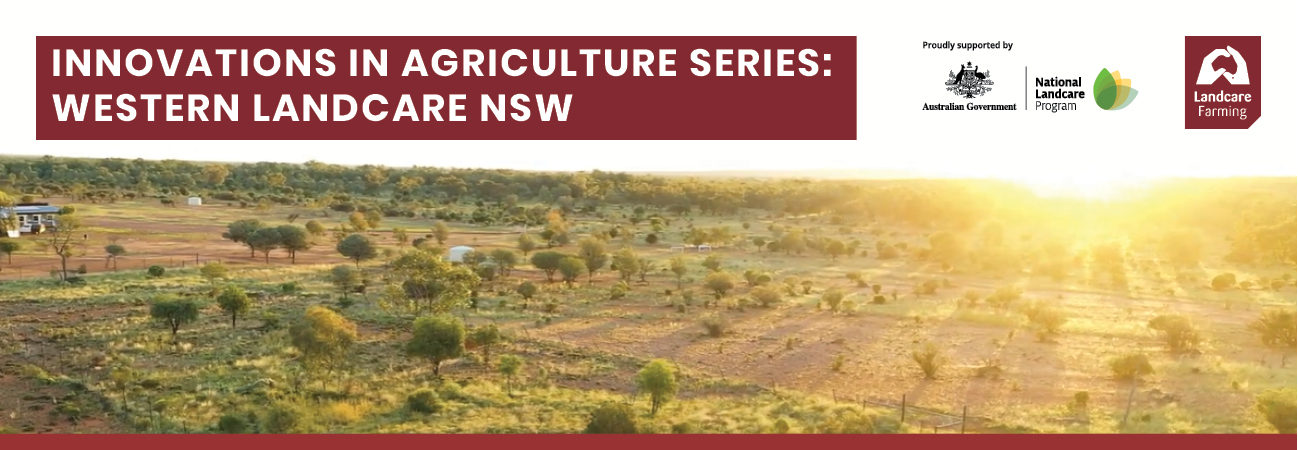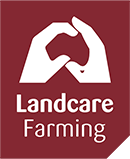
Group Approach to Controlling Feral Pigs in NSW
Collaboration and innovation have been key to Euston Regional Landcare’s (ERL) successful control of feral pigs in their region and has resulted in productivity and profitability gains for local producers.
Scott Leslie runs Guthul Station, a 57,600ha mixed merino and cropping enterprise approximately 40km north of Euston, New South Wales. He first became aware of feral pigs on his property in 2018 after seeing them roaming and the damage they were doing by wallowing in his farm dams.
Feral pigs pose a significant problem across Australia, and are found in high densities in Western NSW. Not only are they a threat to biosecurity due to being vectors for diseases including Leptospirosis, Ovine Brucellosis and Encephalitis, but negatively impact agricultural production by preying on newborn lambs and goats, as well as feeding on and digging up crops to create wallows. By wallowing, feeding and defecating around the edges of watercourses including farm dams, feral pigs also reduce water quality and destroy vegetation that prevents erosion.
Eager to take action to mitigate the damage being done to local properties and farming enterprises, Scott reached out to Western Landcare NSW and feral pig control expert Barry Kelly for help on behalf of Euston Regional Landcare.
“I can’t imagine doing something like this without the help of Landcare,” said Scott. “We were able to all learn together and they had the resources for us.”
While local landholders and members of ERL were keen to tackle the problem, Barry Kelly and Western Landcare NSW Project Coordinator Thel O’Shea knew their biggest hurdle would be ensuring a coordinated approach over the designated 220,905ha project area. At the time of the project launch, 40 baiting systems had to be refilled by landholders or members of Barry’s team once per day, and with properties in the area having a diverse range of utilisation and management types including for almonds, grapes, grazing and cropping, ensuring 12 landholders initially had time to equally engage in the project rollout was difficult.
To overcome this issue, Barry developed new 100kg and 250kg free-feed stations with the support of Local Land Services and landcare groups. The new stations only needed to be topped up with pig bait once per week, making it easier for landholders to make time to participate in the project and for Barry to travel to educate other producers in the region on how to take action against feral pigs.
“A landholder’s most precious thing is their time and feral pig projects need to be run over a broader scale,” said Barry. “Working with the landcare groups involves a lot of landholders in a tight area, and we could go from one property to another. Everyone’s involved and we achieved tremendous results.”
By using the new baiting stations and reducing the time needed to ensure baiting was ongoing, the group was able to double the number of baiting sites and increase the project impact.
To date over 600 feral pigs have been removed from the project area. “A really good thing about Euston Landcare Group is that they identified this problem really early,” said Thel O’Shea. “They got motivated, they took ownership, and as a coordinated approach they got cracking early and it’s really made a difference for the number of pigs that were taken out of here.”
To demonstrate to local landholders and the importance of feral pig management and the success of their approach, ERL has hosted four information workshops providing the latest advice on managing feral pigs and coordinated management options.
“The knowledge spreads throughout the landcare network and will grow to other communities,” said Barry. “It makes the job so rewarding and we can achieve a much better result.”
This case study was produced as part of the Landcare Farming Innovations in Agriculture Series. Supported by the Australian Government’s National Landcare Program, the Landcare Farming Innovations in Agriculture Series is managed in partnership by Landcare Australia and the National Landcare Network.
Explore the following resources to find out more about managing feral pigs:
- Pigbaitta pig baiting system (as used in ERL project)
- National Feral Pig Action Plan
- Feral Pig Control (NSW Department of Primary Industries)
More Innovations in Agriculture stories from Western Landcare NSW:



